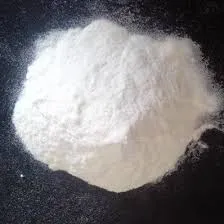
Dec . 05, 2024 09:58 Back to list
grades of hpmc
Grades of HPMC A Comprehensive Overview
Hydroxypropyl Methylcellulose (HPMC) is an important cellulose derivative widely used in various industries, particularly in pharmaceuticals, food, cosmetics, and construction. Its unique physicochemical properties make it an essential ingredient in many applications. Understanding the different grades of HPMC is crucial for selecting the right type for specific applications and ensuring optimal performance.
What is HPMC?
HPMC is a non-ionic polymer derived from cellulose, which is naturally found in plant cell walls. The modification of cellulose through hydroxypropyl and methyl groups results in a soluble polymer that exhibits excellent film-forming, thickening, and binding properties. Due to its versatility, HPMC is available in various grades, each tailored for specific applications.
Grades of HPMC
The classification of HPMC grades primarily depends on the degree of polymer substitution, viscosity, and molecular weight. Here are some common grades and their key characteristics
1. Low Viscosity Grades These grades, often denoted by a viscosity range of 3,000 to 5,000 mPas, are suitable for applications requiring fast solubility and low viscosity. They are widely used in oral pharmaceutical formulations, such as tablets and capsules, as they aid in disintegration and controlled release.
2. Medium Viscosity Grades Ranging from 5,000 to 15,000 mPas, medium viscosity HPMC grades are popular in various applications, including as thickeners and stabilizers in food products and cosmetics. They provide a balance between viscosity and solubility, making them ideal for applications requiring both properties.
3. High Viscosity Grades These grades exhibit viscosities greater than 15,000 mPas and are characterized by their thickening and gel-forming capabilities. They are commonly used in applications like gel formulations, adhesives, and even construction materials. High viscosity HPMC provides enhanced stability and improves the texture and consistency of products.
grades of hpmc

Applications of HPMC Grades
The selection of HPMC grades is pivotal in achieving desired outcomes in various industries
- Pharmaceuticals In drug formulation, HPMC is often used as a film coating agent, binder, and controlled release agent. Its compatibility with a wide range of active pharmaceutical ingredients (APIs) enhances drug delivery systems.
- Food Industry HPMC serves as a thickening, emulsifying, and stabilizing agent in food products. It helps maintain texture, improve mouthfeel, and extend shelf life while being safe for consumption.
- Cosmetics and Personal Care In cosmetic formulations, HPMC is utilized as a thickener, hydrating agent, and stabilizer. Its ability to form films contributes to the performance of lotions, creams, and hair products.
- Construction HPMC is employed in building materials like tile adhesives and joint compounds. It enhances workability, improves water retention, and provides anti-settling properties.
Conclusion
The diverse grades of HPMC cater to a wide array of industrial needs, with each grade offering distinct properties and functionalities. Understanding these differences is essential for manufacturers and formulators looking to optimize their products. As the demand for high-performance materials continues to grow, HPMC remains a vital component across multiple sectors, contributing to advancements in technology and product quality. With ongoing research and development, the future of HPMC grades is promising, potentially leading to even more innovative applications and formulations.
-
Versatile Hpmc Uses in Different Industries
NewsJun.19,2025
-
Redispersible Powder's Role in Enhancing Durability of Construction Products
NewsJun.19,2025
-
Hydroxyethyl Cellulose Applications Driving Green Industrial Processes
NewsJun.19,2025
-
Exploring Different Redispersible Polymer Powder
NewsJun.19,2025
-
Choosing the Right Mortar Bonding Agent
NewsJun.19,2025
-
Applications and Significance of China Hpmc in Modern Industries
NewsJun.19,2025







